Toyosu Fish Market and Tuna Auction
Getting in a day's sightseeing all before the time we usually start home-school
[Ooof. Please accept my apologies for any typos or inconsistencies below. It’s all I can do to keep my eyes open right now. 🥱]
At the crack of well-before-dawn, we rose this morning to head out to the Toyosu Fish Market this morning. Toyosu is the 2018-built replacement for the old Tsukiji market, which had served as Tokyo's primary fish market (and the largest fish market in the world) since the 1920s, bringing in vast volumes of fish from around the globe, seeing it change hands and then head out again for destinations near and far. We (N and I) had been to Tsukiji in its old iteration back in 2009, and we were eager to both see the market again and to see what had changed in the move to Toyosu. Getting to the fish market was also waaaay up on T’s hit list, so it was definitely about time.
With eyes bleary from a 4 AM wake-up call, we realized we missed out on the classic traveller hack of visiting when jet lag makes the wee hours easy to handle. And despite the mid-March timing, and 22C temperatures a few weeks back, we strode out into snow falling on Tokyo, one more reason to appreciate the proper indoor environment of Toyosu, vs the partially indoor/outdoor feel of Tsukiji. But it was still all well worthwhile.
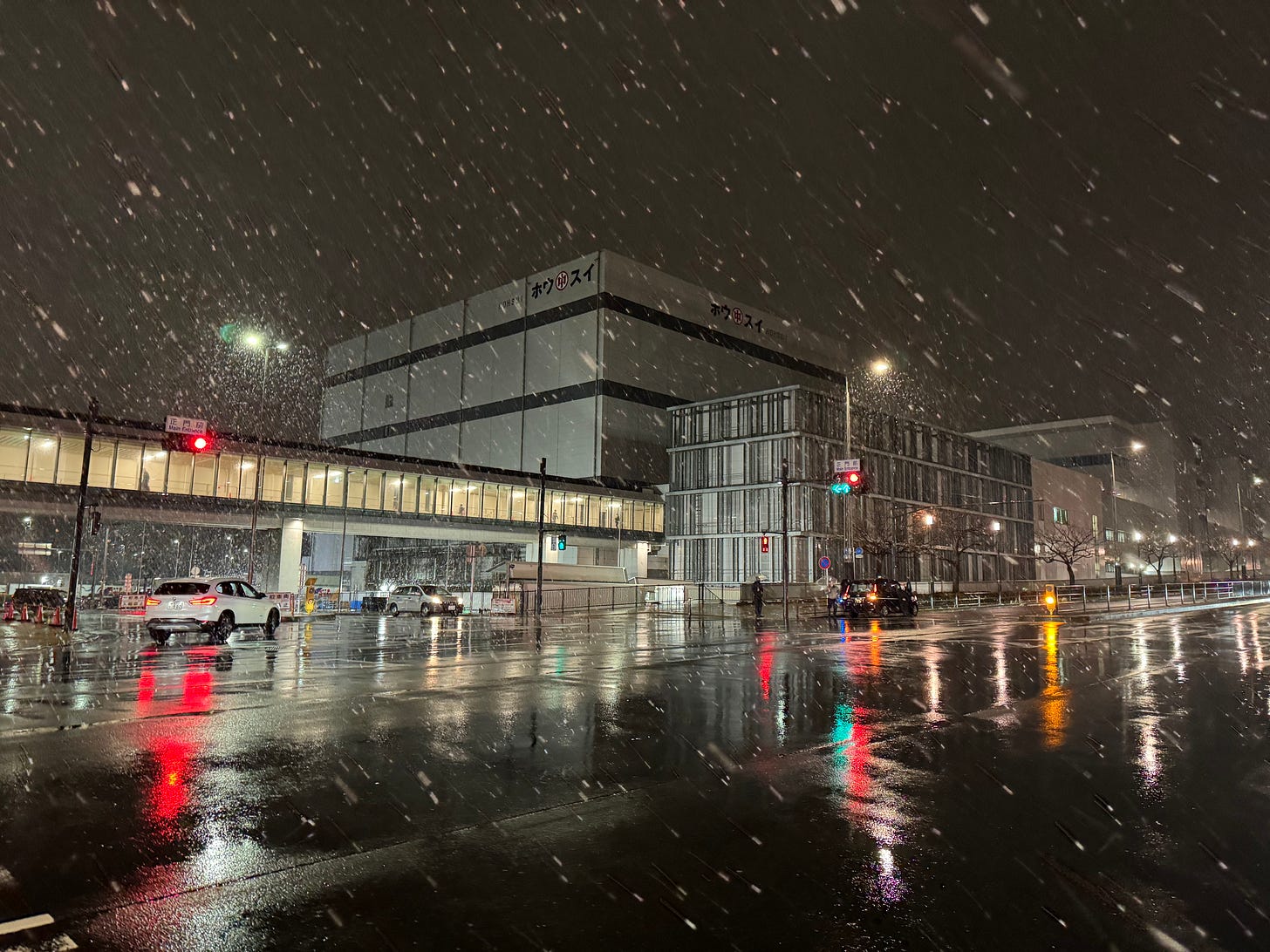
We had applied for, and gotten, free tickets to see the tuna auction, which serves as the main draw for the market, from the closer observation deck. These tickets are made available approximately one month in advance, and have you brought to a separate viewing point one floor up from the tuna auction floor and separated from the action by a partial glass wall, instead of 3 floors up in a fully sealed separate corridor. It's still possible to just go visit without closer access, but your vantage point is nowhere near as good, either from a sightline standpoint or from an atmospheric perspective, so if your planning allows, it's definitely preferable to plan ahead and book the free tickets. At 5:30 AM, our group was called forth, and we were brought in to see the a(u)ction.
On the tuna auction floor, there are various different sections, we assume from different wholesellers selling the tuna they've acquired and brought in. The tuna are laid out in neat rows, with the tail cut off, allowing the intermediate wholesellers to examine the flesh of the fish more closely and choose which fish to bid on and how much to bid. When each section's bidding kicks off, it goes fast, with each fish's auction going from start to end in ~5 seconds. A bit of yelling, some hand signals from interested buyers, and agreed price, and on to the next one. The bobbing, weaving, yelling, and gesticulating of the auctioneers is a hoot, and brings a lovely personality and animation to the proceedings. We were able to see about 6 different auctions happen, with both fresh and frozen tuna being auctioned off, some of which were absolutely massive.
You're nowhere near as close to the action as you were in Tsukiji, where you were literally a couple of feet away from some of the fish, and in real danger of accidentally getting in the way of the proceedings. But, to be fair, from the observation deck, the action and the bustle of the tuna auction was all still very easy to appreciate, and you still got a real sense of immediacy which was lovely to behold. Entirely apart from the practical and logistical reasons why they needed to move the market, the upgrades in terms of the fit-for-purpose facility, and the more trader- and tourist-friendly setup, which I'm sure helps reduce instances of tourists accidentally getting in the way, is a good step up. The tuna auction itself is still well worth a visit.
What's more unfortunate is the "Intermediate wholesale market". This is where the tuna go after auction, and the intermediate wholesellers carve up these massive fish into blocks, to then be sold on to restaurants, stores, and other purchasers. Also in this area are all manner of wonderful seafood of various other types, whether live fish or crustaceans, fresh seasonal fish from varied waters, or dried or processed fish. The bounty of the sea here, at Tsukiji, was amazing to see, and my memories of seeing octopi, shrimp, eels, fish, and many other things here, along with the tuna dissecting process, were very vivid. At Toyosu, this part of the market is very much off-limits to visitors, and other than 6 small windows to peek through at market aisles from a couple of floors up, your view is very limited. This is unfortunate. While at Tsukiji I felt at risk of getting in the way of the trade purchasers, the size of the market was sufficient that it didn't feel too troubling, and the lack of any real way to get a sense of all of this at Toyosu feels like a part of the experience has been lost. This was a shame.
The other thing that has come across from Tsukiji, is a group of restaurants, providing both food for market workers and an opportunity to tap into the fresh seafood without it leaving the building. We, somewhat unwittingly, wound up at the relocated site of a sushi-ya (Iwasa Sushi) we had gone to 15 years previously, and were attended to in part by the same lovely older lady who was visible in an old picture of me from 15 years before. It was, predictably, lovely, and had both T and me in particular very pleased. mmm… sushi breakfast and food science field trip, done and dusted before 8 AM. Lovely way to start the day.

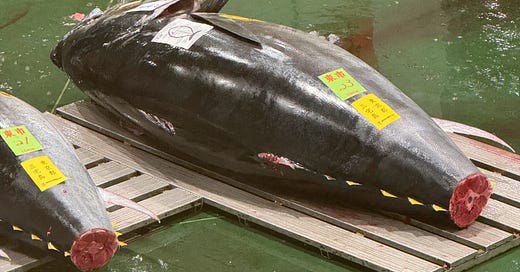


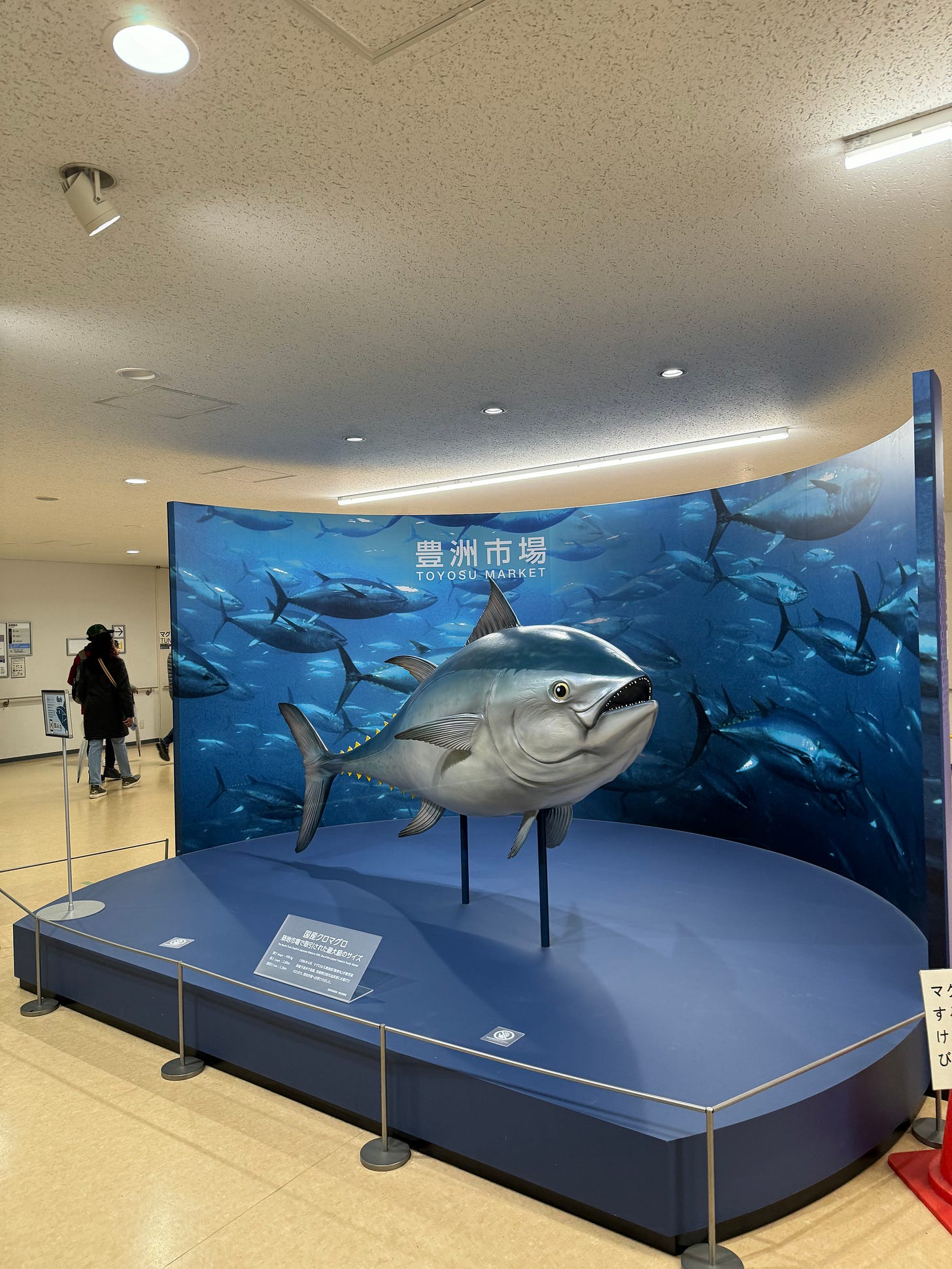
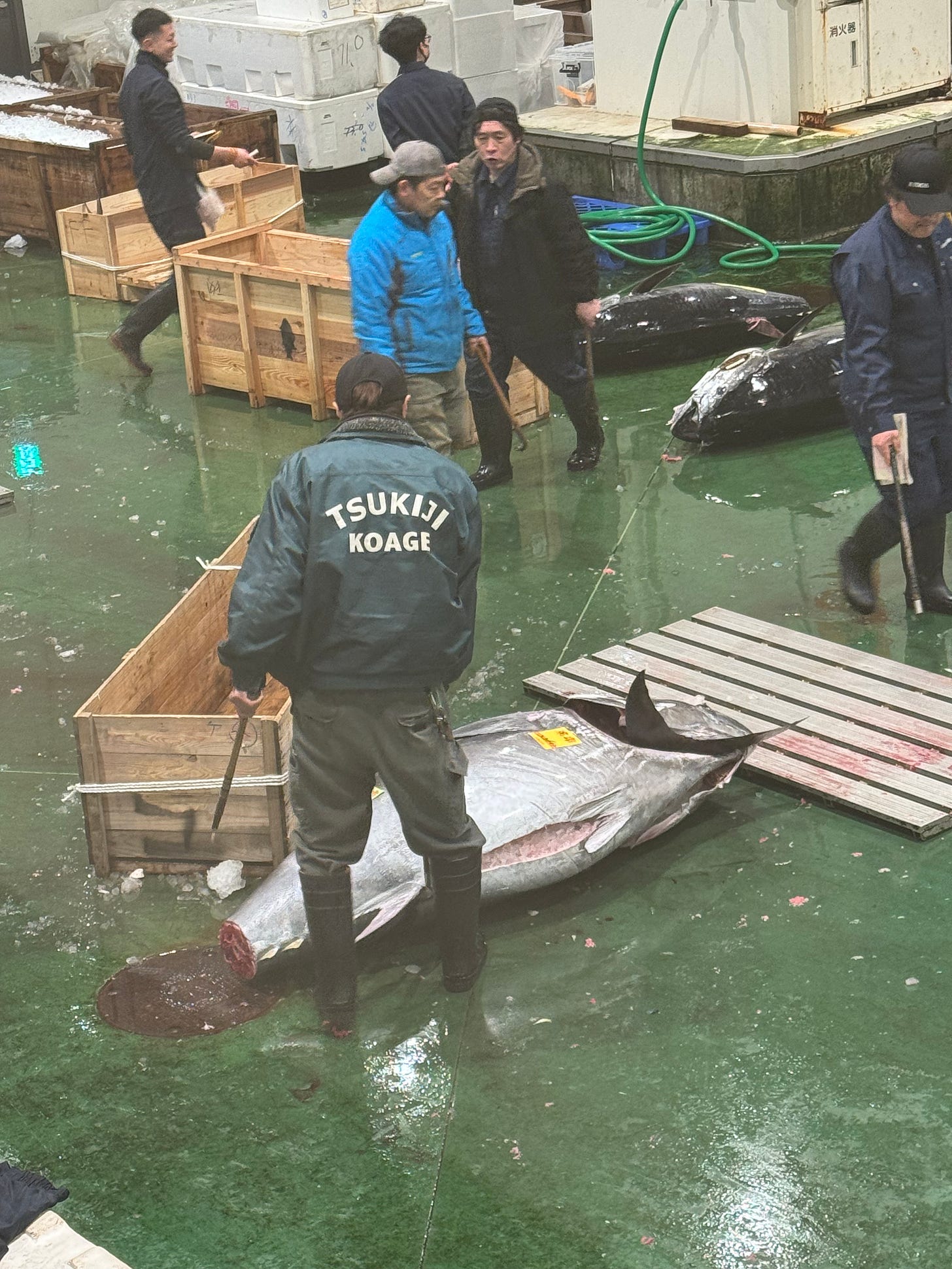
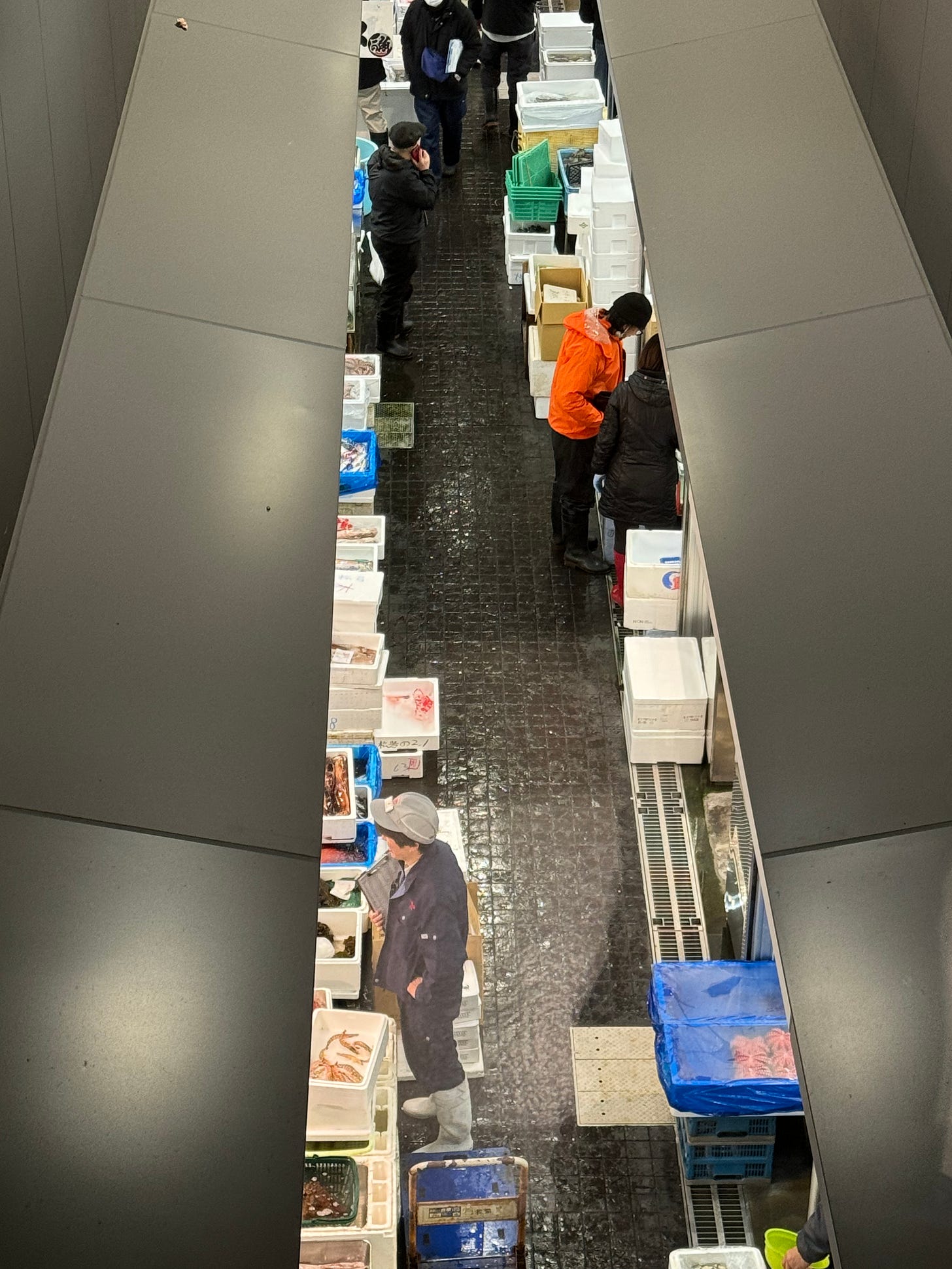
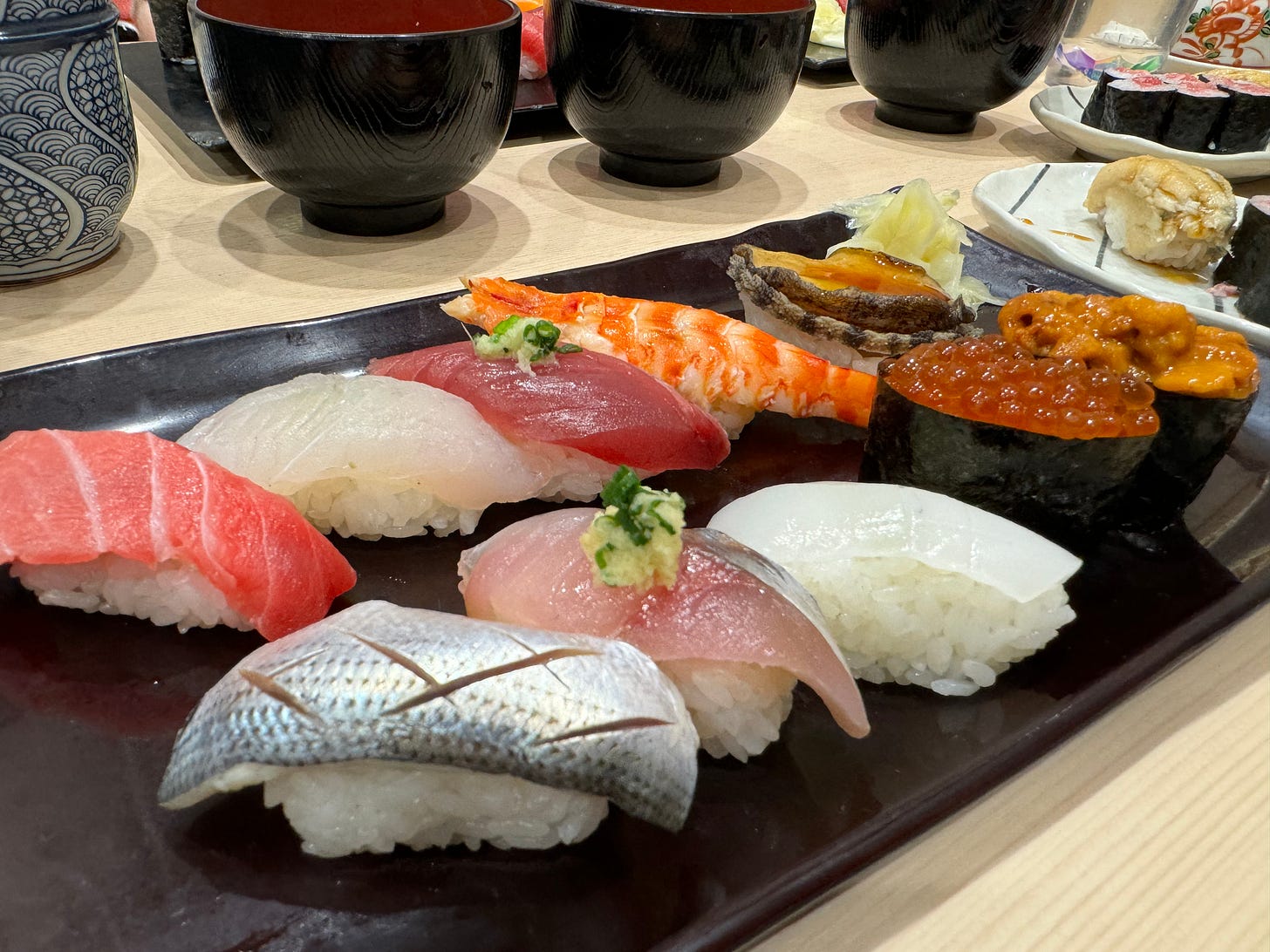
I especially like the comparison between Tsukiji and Toyosu. Interesting that you ended up at Iwasa Sushi where you went in 2009.